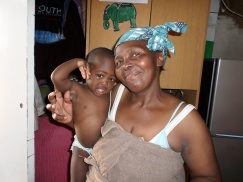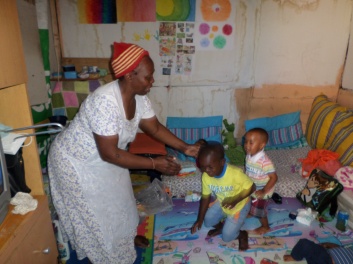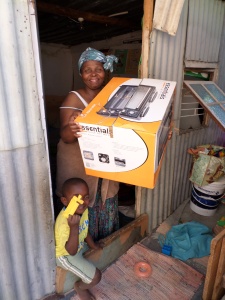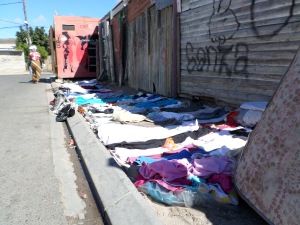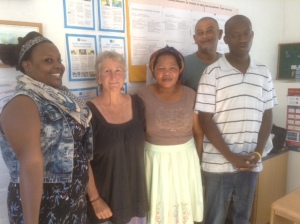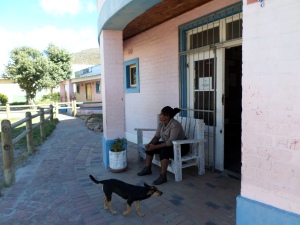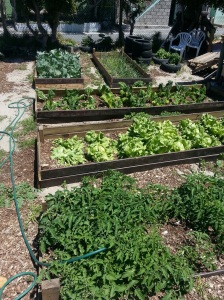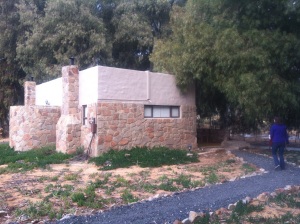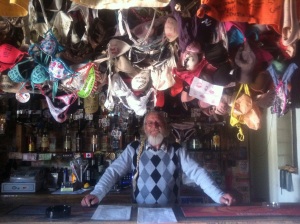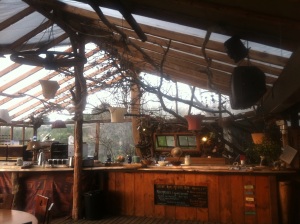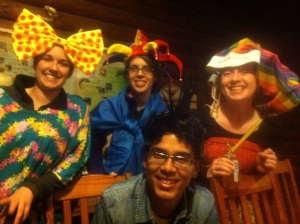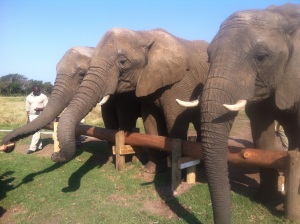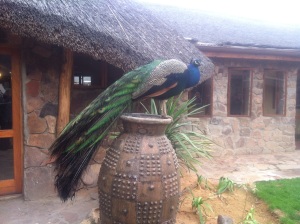It was difficult to grasp that our time with the World Teach program was drawing to an end. The 12 of us had bonded so completely that we were a volunteer family. Although I lived on my own in my little cottage, I saw at least some

First day photo op: Jackie, Wendy, Emma, Noel, Peter — Du Toitskloof Pass, between Paarl and Worcester, Western Cape
of the volunteers every day. Britney, Lacy, Ashley, Dina, Eileen, and Sarah lived in a group house within walking distance of my cottage in Kommetjie (the white community). Jackie, Wendy, and Emma lived with their host family, Gavin and Lindy, in Ocean View (the coloured community); and Brett and Noel, our two male volunteers, lived with their host family, Leslie and Ron, also in Ocean View. Everything felt so settled and our lives had become so completely entwined with our communities and schools, it did not seem possible that in a short time we would be leaving this experience behind.
From 7 – 12 August, Peter and Alison Fenton, our WT coordinators, drove all of us (in 2 vans – or combi’s as they are known in S.A.), eastward through the Western Cape, through mountain ranges and down to the Indian Ocean on the southern coast of South Africa. Although still in the winter season, we were very fortunate that the weather was beautiful most of the time – although quite chilly most evenings and nights.
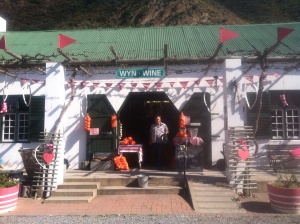
Afrikaans shop – De Doorns
The first day, we drove up the Cape Peninsula, through Cape Town, and east into the heart of the Western Cape. We drove 400 kilometers through the Klein Karoo and Groot Karoo (little and great karoos); driving for hours without seeing more that a couple of cars, vast empty landscape, and spectacular mountain ranges. The mountains tower

Jackie, Emma and Wendy in field of flowers at “De Doorns”
over thousands of hectares of succulents and fynbos (fine-bos), a natural shrubland vegetation. Fynbos (Dutch for fine-leafed plants) is made up of cape reeds, proteas, and ericas. The King Protea plant is the national flower of South Africa. The land looks dry and arid, but in the Spring, (our autumn), the valleys and mountains turn into a carpet of flowers.
Peter and Alison were very thoughtful about finding interesting places to stop. One of our first was a charming shop called De Doorns (The Thorns), where we purchased the popular Western Cape tea called Rooibus (Red Bush) and small tin cups like those used by the Afrikaaners to drink coffee.
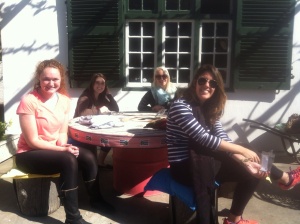
Rest stop at De Doorns: Elaine, Ashley, Sarah and Dina
We also had the chance to take pictures in a nearby field of wildflowers (see above). Driving on, we passed through the Hex River Valley, bordered by the Hex River Mountains, 120 kilometers northeast of Cape Town. The Hex River Mountains are the 2nd highest mountain range in the Western Cape. We drove over the Hex River Pass between De Doorns and the Touws River – with dramatic views of rugged mountain peaks and endless valley vistas.
At about 2:00 p.m. the first day, we arrived at our first destination, Aquila Game Reserve. Aquila is a private game reserve near Touws River, with 4,500 hectares of southern Karoo highlands. Although it is a small reserve, Aquila is proud of its lions and lion cubs saved from “canned lion” hunting. Aquila also helps save rhinos from being poached for their horns, and cares for two rescued cheetahs and one leopard – both endangered species.
The lodge and accommodations at Aquila were beautiful and we enjoyed a hearty lunch and were settled into our rooms before the start of the evening game drive. We boarded the large game vehicle and were glad to see blankets in every seat. Once the sun starts to go down, it gets very cold in the late afternoon. The game drive was 3 hours – right through dusk until it was dark. The excitement was contagious as we came across so many different types of animals, from elephants to hippos to springbok to rhinos. In all my trips to Africa, I had never seen a big cat.

Off on our game drive adventure
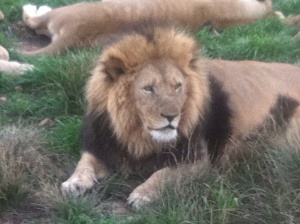
On this drive, for the first time, I saw LIONS – two males and five females. I was thrilled! It was cold and clear as the soft streaks of sunset touched the mountaintops. Thoroughly chilled and hungry, we were happy to go back to the lodge and help ourselves to a fabulous buffet dinner.
The day ended on a very special note. It was Wendy’s Birthday and after dinner we all gathered in Jackie and Emma’s room to celebrate. Jackie and Emma had bought a lot of goodies for dessert at the Compass Bakery back near Kommetjie and we used the tin cups we bought at De Doorns for a wine toast. All the rooms had small fireplaces with a stack of wood and starters, so Jackie began building a fire and the rest of us piled into the bed. It was family night for World Teach – Peter, Alison and their daughter Ashlin joined us for the celebration. The warmth of our friendship and special memories of our shared experience filled our hearts and it was an evening I know I won’t ever forget.
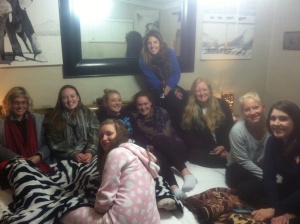
Me, Emma, Britney, Elaine, Dina, Lacy, Sarah, Ashley, and Ashlin (in pink)
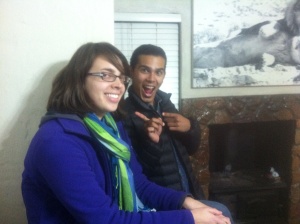
Wendy – celebrating her Birthday, and Noel (Jackie just out of the picture, building the fire).
Scroll down to see all posts from the beginning or check out Archives, starting with July 2014.

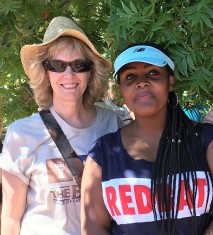
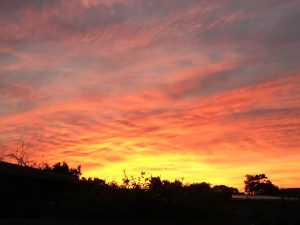

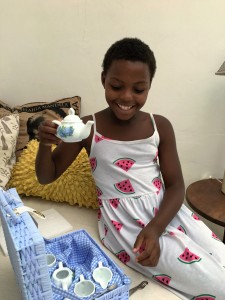



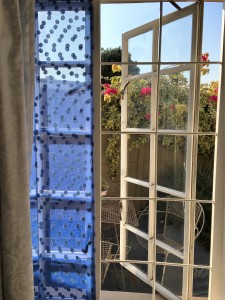

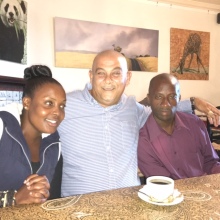
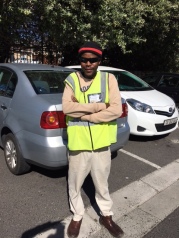

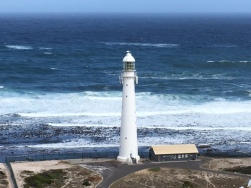
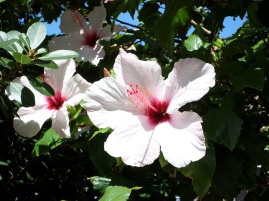 The overwhelming number of sunny days brings all the colors of the landscape, houses, and shops into sharp focus against the dark shade of the trees. The sky is a startling cerulean blue and perfect foil to the bright blooms that grow along high fences and walls. The sky is crystal clear on most nights and without the interference of ambient light, the stars are brilliant, twinkling like tiny diamonds against midnight blue. At every phase, the glowing moon is sharply outlined above the sea and as it moves across the sky to hover over the mountains.
The overwhelming number of sunny days brings all the colors of the landscape, houses, and shops into sharp focus against the dark shade of the trees. The sky is a startling cerulean blue and perfect foil to the bright blooms that grow along high fences and walls. The sky is crystal clear on most nights and without the interference of ambient light, the stars are brilliant, twinkling like tiny diamonds against midnight blue. At every phase, the glowing moon is sharply outlined above the sea and as it moves across the sky to hover over the mountains.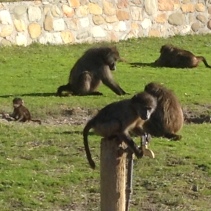 Dogs running through the surf with their owners, the guinea fowl pecking away under a tree, the occasional baboons wandering along Kommetjie Road, and the flamingos wading in the Kom…the sound of ocean waves, orange glow of sunsets, the mist rolling down the mountains and settling in smokey wisps throughout the valley, and the hint of wood smoke in the evening air…these are a few of my favorite things.
Dogs running through the surf with their owners, the guinea fowl pecking away under a tree, the occasional baboons wandering along Kommetjie Road, and the flamingos wading in the Kom…the sound of ocean waves, orange glow of sunsets, the mist rolling down the mountains and settling in smokey wisps throughout the valley, and the hint of wood smoke in the evening air…these are a few of my favorite things.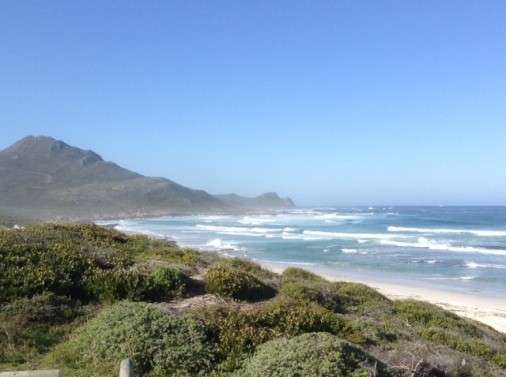


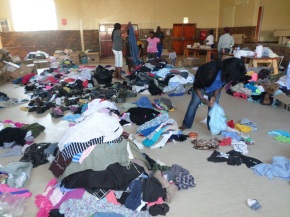
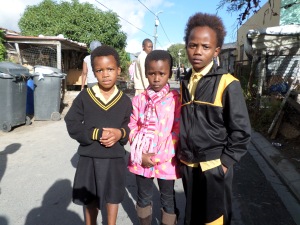
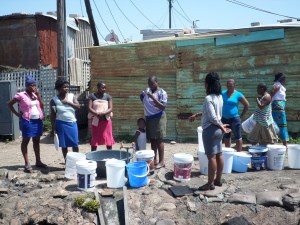
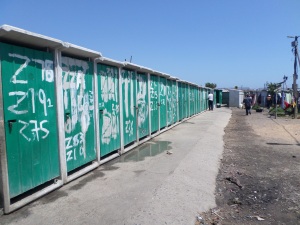
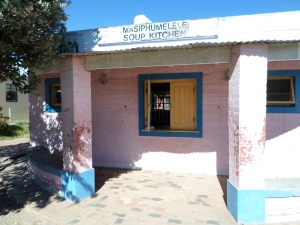

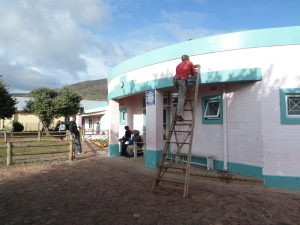

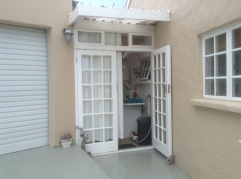 or several weeks at a time, so Jackie and I keep each other company and pop back and forth every day. It is also the home of Mittens, an elderly gentleman cat, enjoying his last years in retirement.
or several weeks at a time, so Jackie and I keep each other company and pop back and forth every day. It is also the home of Mittens, an elderly gentleman cat, enjoying his last years in retirement.
